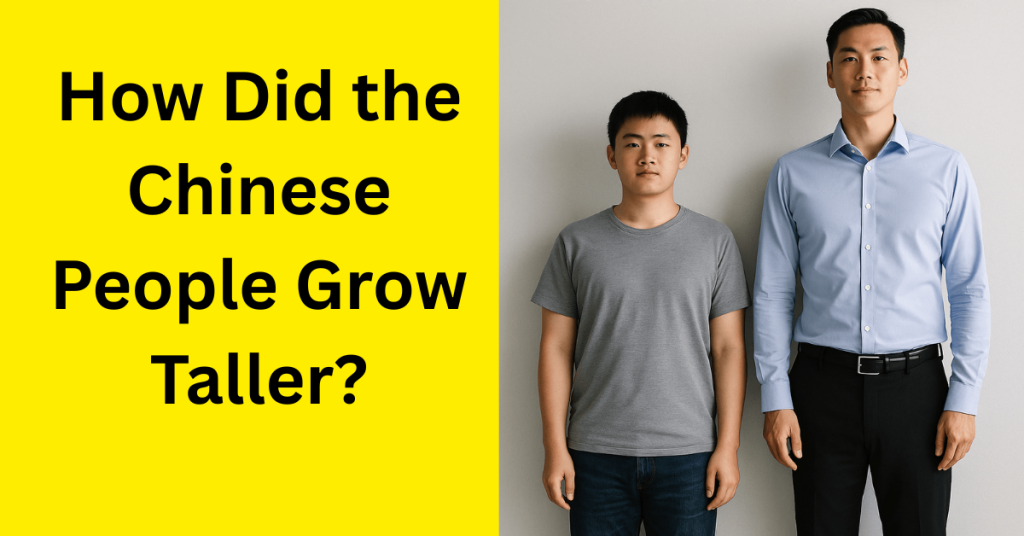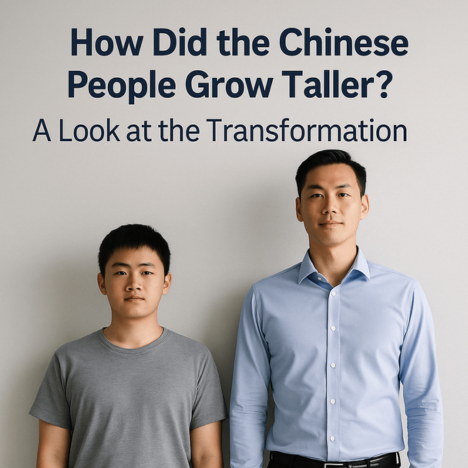Over the past few decades, China has witnessed a remarkable change—not just in its economy or skyline, but in the physical stature of its people. Once known for having a population with relatively short heights, the average Chinese person today stands much taller than their ancestors. Studies show that between 1985 and 2019, the average height of 19-year-old Chinese men jumped by nearly 3.5 inches (9 centimeters)—one of the fastest increases globally. So, what’s behind this growth spurt? Let’s explore the fascinating reasons and whether the Chinese government played a role.
A History of Shorter Statures
To understand this transformation, we need to rewind to the mid-20th century. Back then, life in China was tough. Events like the Great Chinese Famine (1959–1961) left millions struggling for basic food. Poor nutrition, widespread poverty, and limited healthcare meant that many children didn’t grow to their full potential. The average height of Chinese adults reflected these hardships—men were often under 5 feet 5 inches (165 cm), and women even shorter. It wasn’t a matter of genetics alone; the environment played a huge role.

The Turning Point: Economic Boom and Better Living
Fast forward to the late 1970s, when China opened its doors to economic reforms under Deng Xiaoping. This shift sparked a chain reaction that reshaped the nation—and its people. Here’s how:
A Protein-Packed Diet
Before the reforms, the Chinese diet relied heavily on rice, vegetables, and minimal protein. But as incomes rose, families could afford meat, eggs, milk, and fish—foods rich in nutrients essential for growth. Protein, calcium, and fats became staples, especially in urban areas, fueling healthier and taller generations.
Improved Healthcare Access
With economic growth came investments in hospitals, clinics, and vaccination programs. Malnutrition and childhood diseases, once common, declined sharply. Healthy kids grow taller, and China’s focus on public health laid the foundation for this physical change.
Urbanization and Lifestyle Shifts
Millions moved from rural villages to bustling cities, where access to food, education, and sports facilities improved. Urban Chinese children grew taller than their rural counterparts, highlighting how lifestyle impacts height. Better sleep, less physical stress, and even parental awareness about nutrition also contributed.
Did the Government Give Out Magic Pills?
A common question is whether the Chinese government handed out medicines or supplements to boost height. The short answer? No, there’s no evidence of a nationwide “height pill” program. However, the government did indirectly help through smart policies:
Nutrition Initiatives: Programs like free school meals and milk distribution in poorer regions tackled malnutrition. Supplements like Vitamin D and calcium were sometimes provided, not to increase height specifically, but to improve overall health—which had a happy side effect.
Economic Policies: By lifting millions out of poverty, the government ensured families could afford better food and care for their kids.
Healthy China Vision: Launched in recent years, this plan aims to enhance national health by 2030, including better nutrition for kids. While it’s too early to see its full impact, it builds on decades of progress.
There’s no record of widespread use of growth hormones or similar drugs. Such treatments are costly and reserved for medical cases, not mass distribution. Traditional Chinese Medicine (TCM), with its herbs and tonics, has been popular among some families, but science doesn’t back its role in height growth.
The Numbers Tell the Story
Today, the average height for Chinese men is around 5 feet 9 inches (175 cm), and for women, it’s about 5 feet 4 inches (164 cm). That’s a big leap from the past! Urban areas lead the trend, though rural regions still lag slightly due to uneven access to resources. Globally, China’s height increase stands out—surpassing many countries in speed and scale.
Why Does This Matter?
This isn’t just about inches or centimeters—it’s a sign of progress. Taller heights often reflect better living standards, health, and opportunities. For China, it’s a physical marker of its journey from hardship to prosperity. Parents today see their children towering over them, a quiet testament to how far the nation has come.
What’s Next for China’s Height?
As China continues to modernize, the height gap between rural and urban areas may shrink further. With ongoing efforts to improve nutrition and healthcare, the next generation could grow even taller. But for now, this growth spurt is a fascinating chapter in China’s evolving story—one where better food, care, and policies turned a nation of shorter statures into one that stands tall.









Leave a Reply